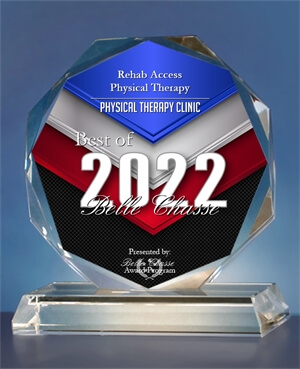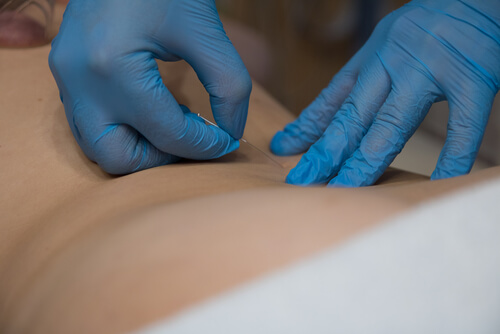Dry needling is a physical therapy method that can be used to treat sciatica and many other conditions. This technique is also called trigger point therapy, and it uses thin needles that look like those used in acupuncture. However, this therapy method is different from acupuncture because it’s based on modern Western medical research. Are you a patient dealing with sciatica in Belle Chasse, Louisiana, who is interested in dry needling? The team at Rehab Access is here to help. Patients typically have many questions about using dry needling for sciatica, but three questions in particular are the most commonly asked.
1. Why is dry needling used for sciatica?
Trigger point therapy is designed to relieve tension in soft tissue, and this includes structures like muscles, fascia, ligaments and tendons. Sciatica can be caused by many factors, but one common cause is muscle tension that’s pulling the spine out of alignment. This misalignment can cause nerve pinching, pain, numbness and other symptoms of sciatica.
The tense areas of back muscles are known as trigger points, and dry needling is intended to help reduce such trigger points. This allows the back muscles to relax and helps the spine return to its normal alignment. In turn, spinal realignment can relieve pressure on the spinal nerves, and this may help reduce the other symptoms of sciatica for Belle Chasse patients.
2. Does using dry needling for sciatica hurt?
Some patients in Belle Chasse may be wary of using trigger point therapy to treat sciatica. After all, many people are afraid of needles and the pain they can cause.
Trigger point therapy uses such thin needles that most patients don’t experience pain during their treatment. In most cases, patients may feel a slight pressure against their skin. Typically, the inserting of the needles leads to a release of tension in the muscles, and this often causes the patient to feel less pain.
3. Can dry needling be used with other physical therapy techniques?
Dry needling is typically recommended as part of a comprehensive treatment plan that includes other therapies. At our Belle Chasse clinic, the Rehab Access team offers many physical therapy techniques to treat sciatica, including trigger point therapy. To determine which techniques are best for you, our team will perform a one-on-one evaluation. Then, we’ll use this information to build you a personalized therapy plan that may include:
- Manual therapy
- Aquatic therapy
- Therapeutic exercises and stretches
- Electrical stimulation
- Dry needling
Take the next step to find relief from sciatica. Contact our team today for more information or to schedule an appointment.



